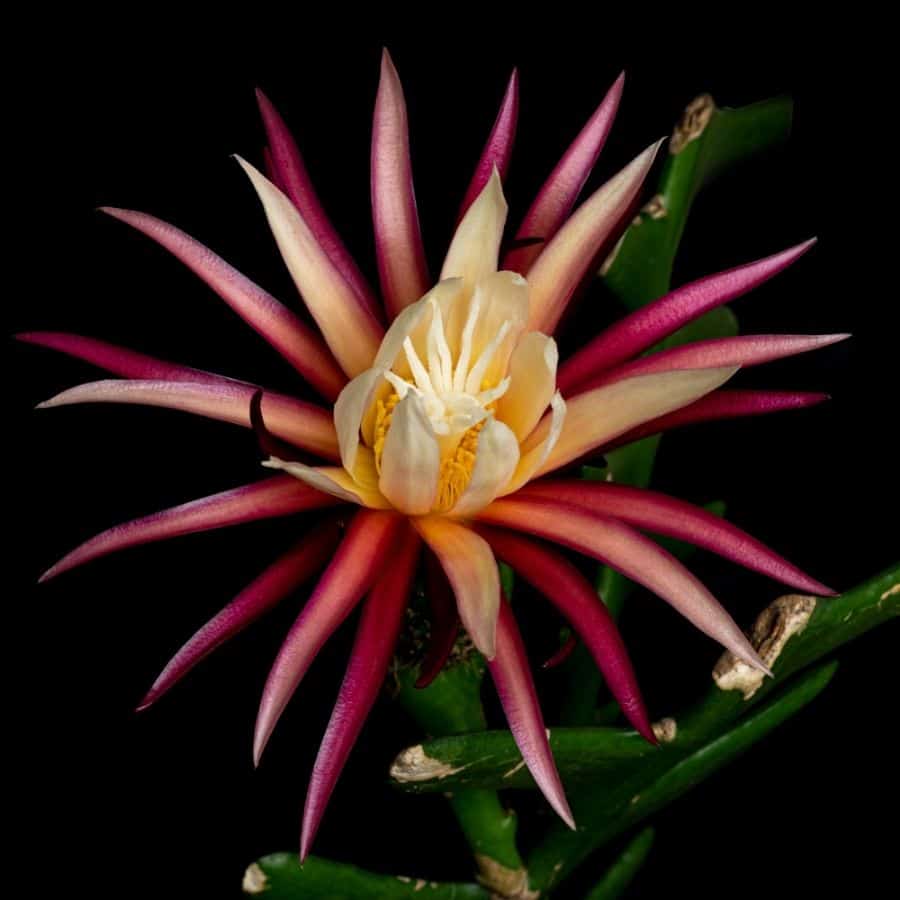Moonlight Cactus: 34 Enchanting Varieties to Brighten Your Nights
Imagine a cactus that blooms only at night, revealing breathtakingly beautiful flowers that last just for a few hours. Sounds magical, doesn’t it? That’s the allure of the Selenicereus, also known as the Moonlight Cactus. With over 34 mesmerizing varieties, these cacti offer a captivating display of nocturnal beauty.
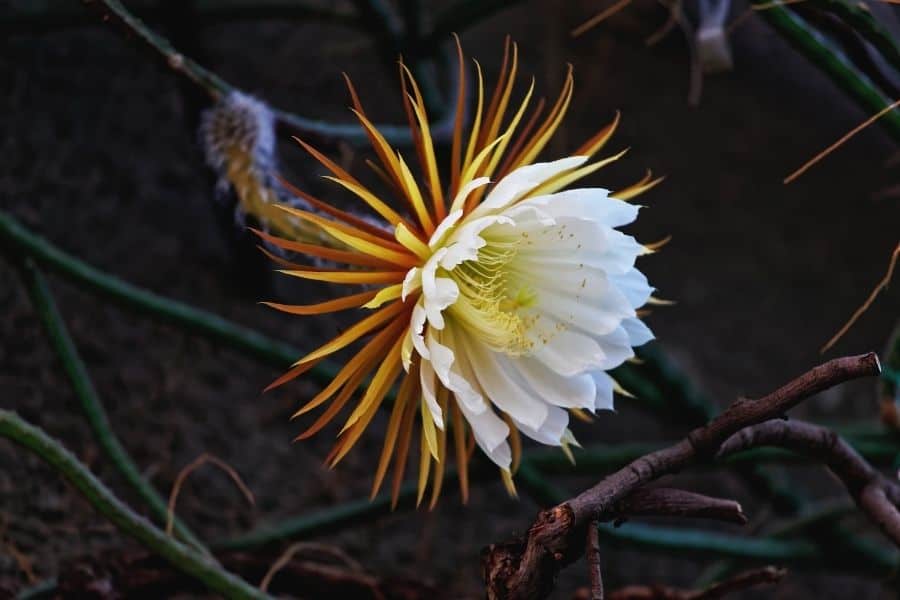
Contents
A Glimpse into the Moonlight Cactus Family
Selenicereus plants belong to the Cactaceae family and are native to Central and South America, as well as the West Indies. While some species can be grown indoors, others thrive outdoors, climbing trees or trailing along the ground. Their stems come in various shapes, from angled to ribbed or even flattened, often sporting intriguing backward-facing lobes that help them cling to surfaces.
Moonlight Magic
As night falls, the true splendor of Selenicereus unfolds. Enormous white flowers, often reaching 6 inches in diameter, burst open, filling the air with intoxicating fragrances. These nocturnal beauties lure moths and bats for pollination, creating a mesmerizing spectacle under the moonlight.
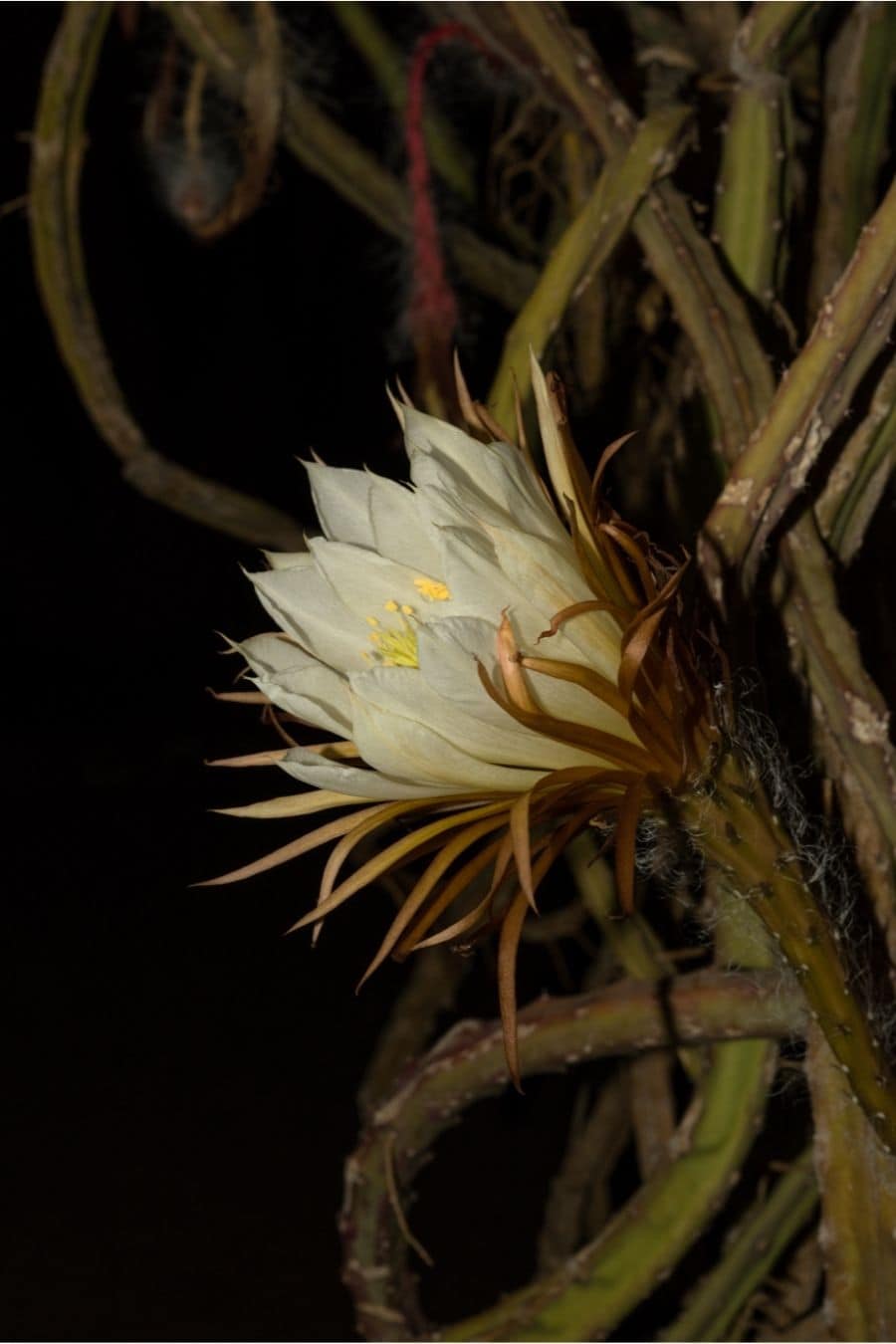
Selenicereus: A Kaleidoscope of Captivating Varieties
Get ready to be swept away by the incredible diversity of Selenicereus varieties. From the quirky zigzag patterns of the fishbone cactus to the regal beauty of the princess of the night, each variety promises a unique and captivating experience.
- Selenicereus anthonyanus (Fishbone Cactus): Imagine a cactus that looks like it’s been playing a game of twister! This bright green, slow-growing variety boasts a zigzag pattern that will have you doing a double-take. With its ability to climb or hang up to 3 feet long, it’s a living sculpture that adds whimsy to any patio or greenhouse.
- Selenicereus alliodorus
- Selenicereus atropilosus
- Selenicereus boeckmannii
- Selenicereus calcaratus
- Selenicereus chontalensis
- Selenicereus chrysocardium
- Selenicereus costaricensis: If you’re a fan of delicious fruits and gorgeous flowers, this variety is a must-have! Commercially grown for its pitaya fruits, the Costa Rican Pitahaya also flaunts stunning blooms that will leave you in awe. Its vine-like appearance only adds to its charm.
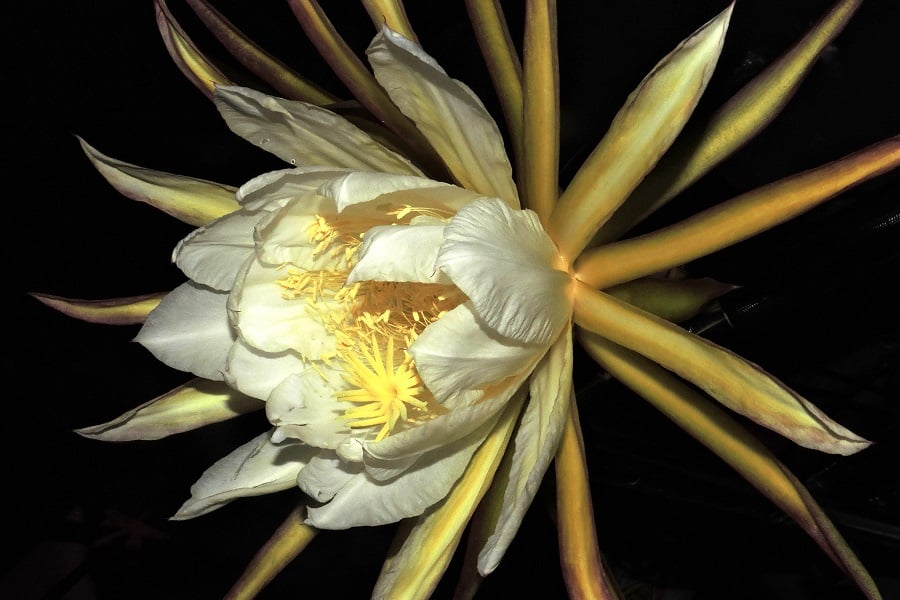
- Selenicereus dorschianus
- Selenicereus escuintlensis
- Selenicereus extensus
- Selenicereus glaber
- Selenicereus grandiflorus: This variety has a fascinating history that dates back to 1791 when it was mentioned by none other than Charles Darwin himself. Described as “intoxicating and spooky,” the night-blooming cereus unfurls its magnificent white flowers at night, creating a mesmerizing spectacle.
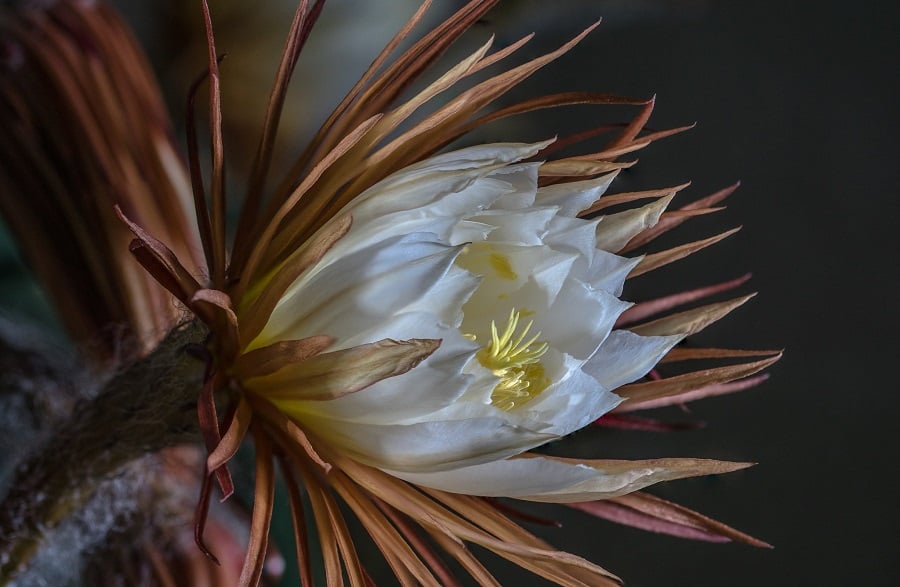
- Selenicereus guatemalensis
- Selenicereus hamatus
- Selenicereus hondurensis
- Selenicereus inermis
- Selenicereus megalanthus
- Selenicereus minutiflorus: Native to Honduras, Belize, and Guatemala, this variety showcases three-angled stems that range from 0.6 to 1.4 inches in diameter. Its small brown spines and occasional long spines add to its unique appeal.
- Selenicereus monacanthus
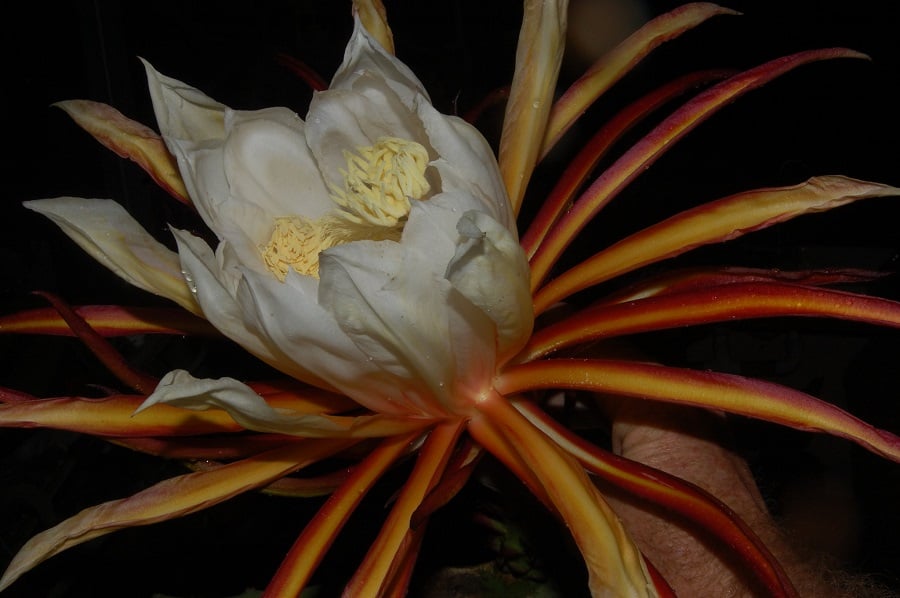
- Selenicereus murrillii
- Selenicereus nelsonii
- Selenicereus ocamponis
- Selenicereus pteranthus: Aptly named the “princess of the night,” this popular variety is a true showstopper. With its four to six-angled stems adorned with spines and no leaves, it bursts into bloom at night, revealing its regal beauty.
- Selenicereus purpusii
- Selenicereus spinulosus
- Selenicereus tonduzii
- Selenicereus triangularis
- Selenicereus tricae
- Selenicereus trigonus
- Selenicereus undatus: This epiphytic cactus variety is a true marvel! Imagine a vine-like plant that can crawl and climb up to an astonishing 33 feet in height. Its aerial roots allow it to scale rocks and trees with ease. The three-angled, fleshy stems can reach up to 2 inches in width, adding to its captivating presence.
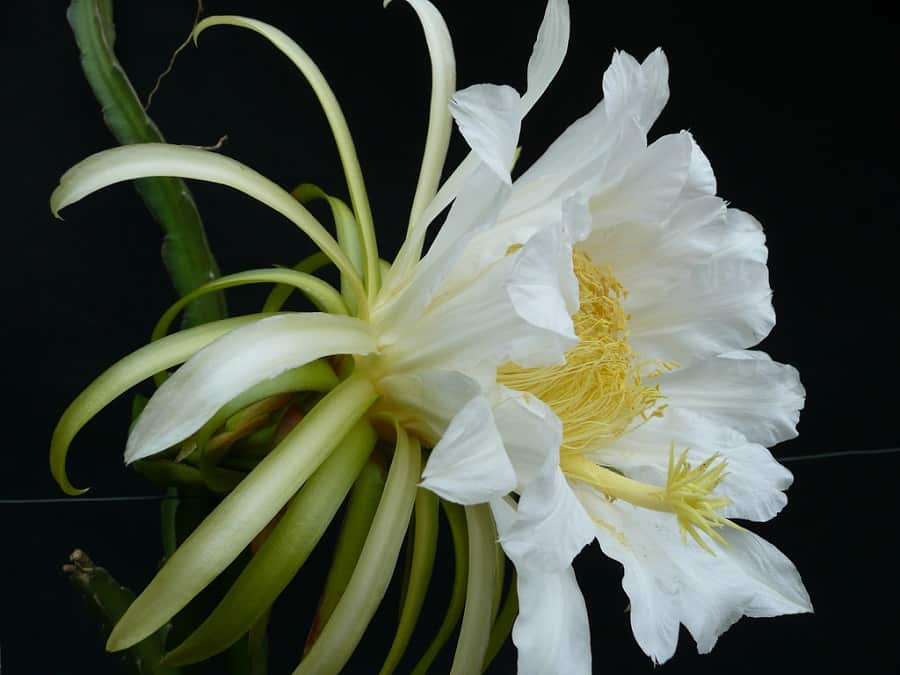
- Selenicereus vagans
- Selenicereus validus
- Selenicereus wercklei
Caring for Your Moonlight Cactus
While these enchanting cacti may seem otherworldly, caring for them is a delightful and rewarding experience. Follow these simple guidelines, and you’ll be rewarded with stunning blooms and healthy growth that will leave you spellbound.
Sunlight Serenity
Moonlight cacti thrive in bright, direct sunlight during the morning or late afternoon hours. However, be cautious of intense midday sun, which can scorch their delicate stems. Aim for a spot that receives around 4-6 hours of direct sunlight each day.
The Goldilocks Zone
Just like the famous fairy tale, these cacti prefer temperatures that are not too hot and not too cold. Avoid exposing them to temperatures below 50°F (10°C), as they’ll start to sulk and may even bid farewell to this world. Ideally, keep them in a range of 65°F to 85°F (18°C to 29°C) for optimal growth and blooming.
A Well-Drained Oasis
Moonlight cacti have a love-hate relationship with water. While they crave moisture, they despise soggy soil, which can lead to root rot and other problems. Ensure their potting mix is well-draining by incorporating materials like perlite, pumice, or coarse sand. Water thoroughly, but only when the soil is completely dry to the touch.
The Perfect Blend
These cacti have refined tastes when it comes to soil. Treat them to a blend of equal parts potting mix, perlite or pumice, and brown peat moss. This magical combination will provide the ideal balance of drainage and moisture retention, ensuring your moonlight cactus feels right at home.
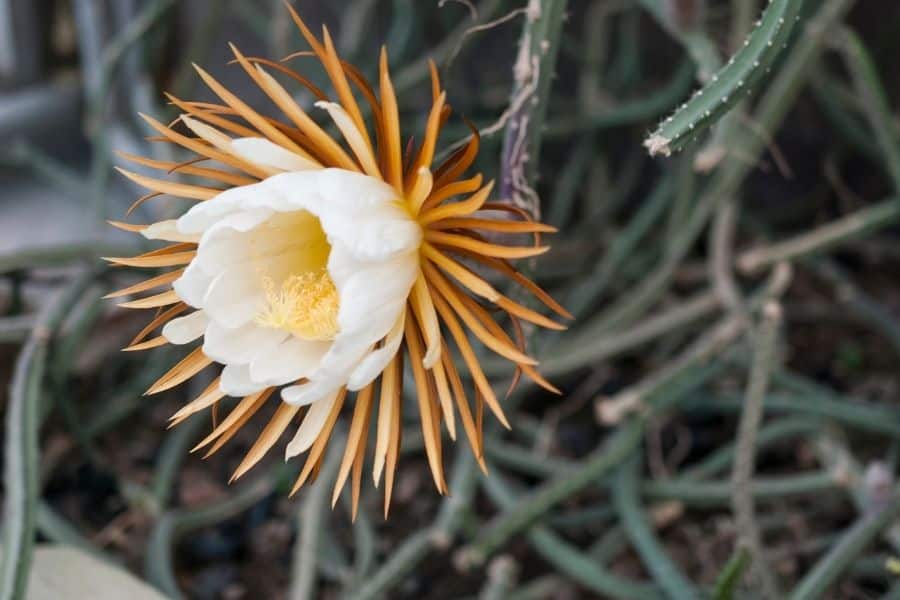
A Refreshing Drink
Like any living being, moonlight cacti appreciate a refreshing drink now and then. However, they’re sensitive souls that can’t tolerate hard water or high levels of salts and minerals. Use rainwater, distilled water, or allow tap water to sit for 24 hours before using it, allowing the chlorine to dissipate.
A Gentle Boost
During the growing season, which typically runs from mid-spring to summer, these cacti can benefit from a gentle boost. Apply a cactus-specific fertilizer once a month, following the manufacturer’s instructions. This extra nourishment will encourage lush growth and abundant blooms.
Pruning Perfection
Unlike their prickly cousins, moonlight cacti require minimal pruning. However, if you notice any damaged or discolored stems, feel free to snip them off with clean, sharp scissors or pruners. This will help redirect the plant’s energy into healthy growth.

